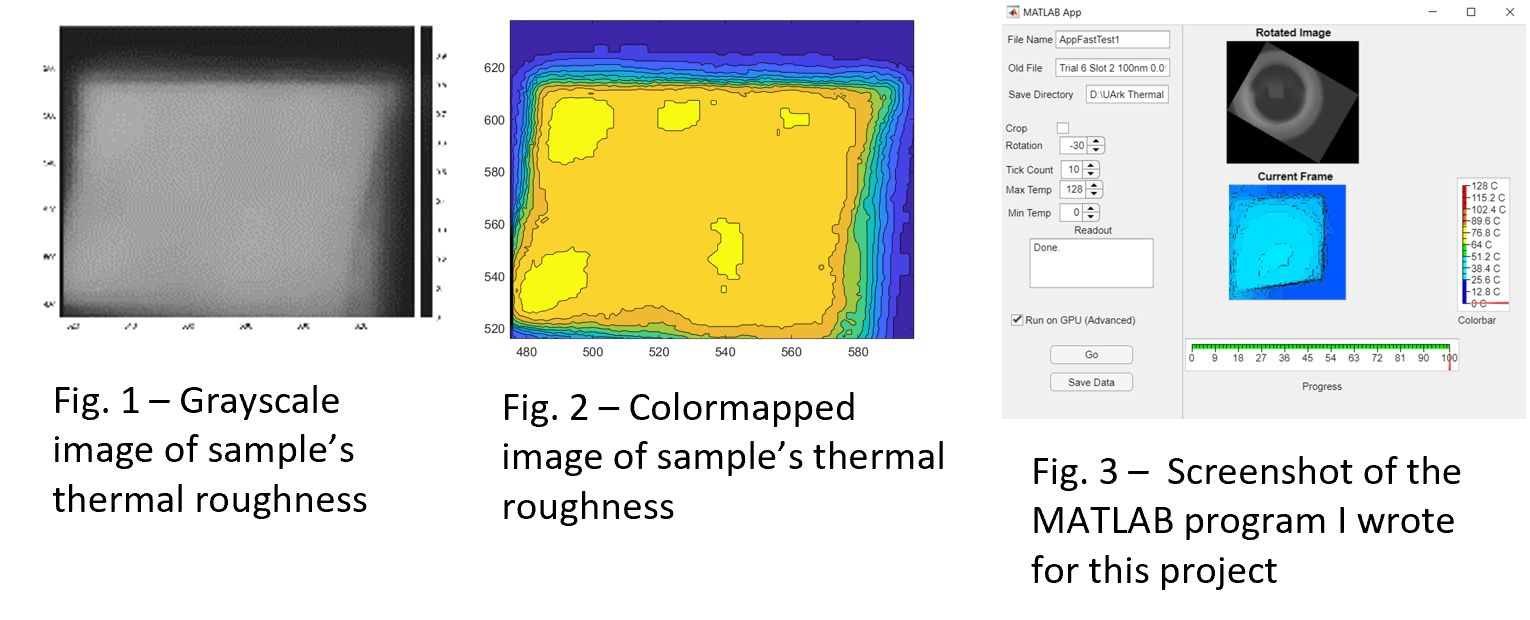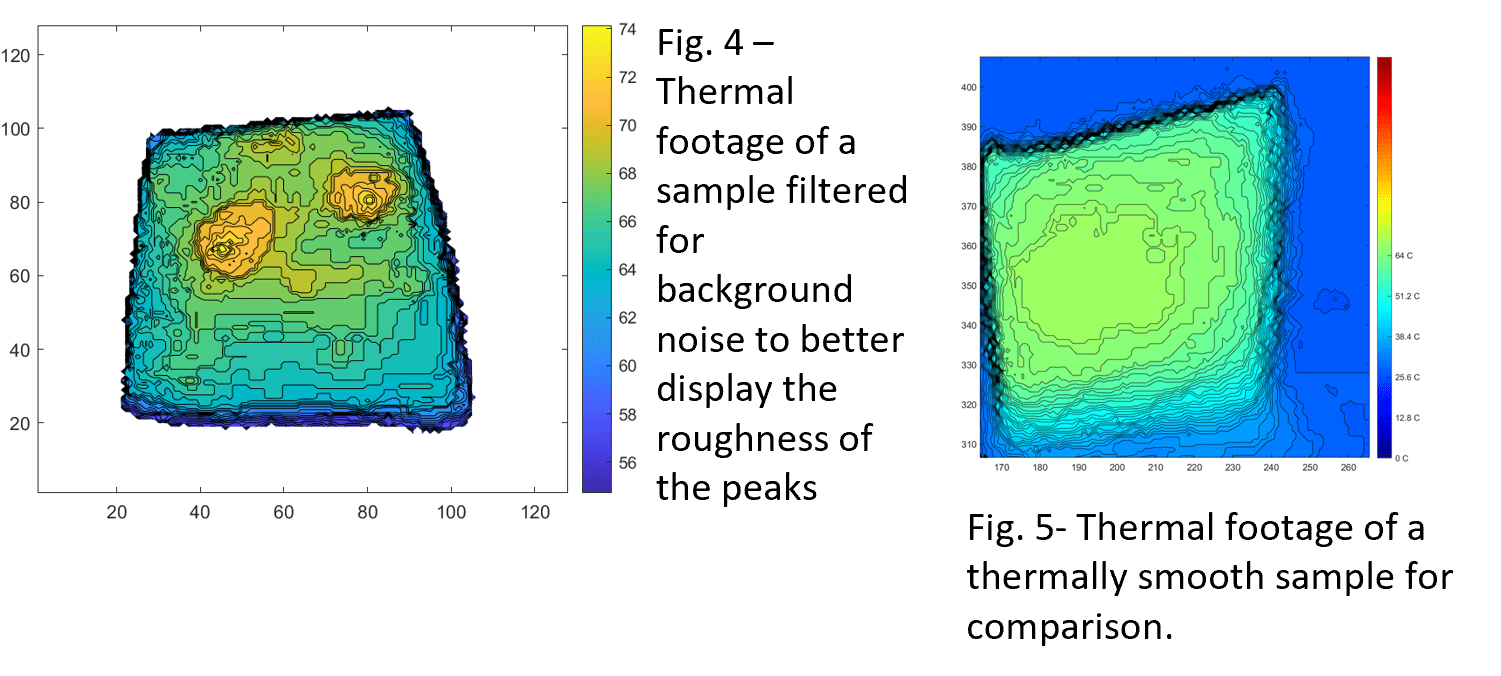Studying Thermal Roughness in Induction Heated Iron Nanoparticle Laced Sorbitol Films
Student: Jon Matutes
Major Professor: Dr. David Huitink
Research Area(s):
Nanoscale Materials & Devices
Background/Relevance
- Induction heating of nanoparticles has a wide variety of applications, from potential cancer treatment to improved efficiency of chemical reactions.
- Induction heating of nanoparticles can provide more precise control over the heating of a substance, as well as quicker heating.
Innovation
- The thermal roughness of induction heated nanoparticles has received little study.
- Understanding the relationship between nanoparticle distribution would further other developments in the field.
Approach
- Using MATLAB, colormaps can be created of thermal roughness from IR footage.

Key Results
- Some samples showed unexpected thermal roughness
- These samples possessed at least one ‘peak’ where the temperature was at least 10 C above the mean of the sample
- These peaks were only present during the heating process.

Conclusions
- Since the peaks were only present during heating, it was concluded that they are due to nanoparticle distribution
- Spin casting processes are likely to produce better thin films for study than drop casting, but our procedures need work
- Future work is likely to involve determining causes for this thermal roughness and developing better methods of creating thin films via spin cast.
